What used to be talked about as “conspiracy theory” is now being discussed openly among the nations of the world. A global currency called the “Bancor” may soon be the global currency, and along with it a global central bank.
“Give me control of a nation’s money and I care not who makes her laws.”
Those were the words of Mayer Amscel Rothschild of the Elite Rothschild Banking Family of Europe. And it is apparent that those in power hope to gain control of not only a single nation’s money, but of all nations’ monetary systems into a single Central Bank with a Global Currency. In that instance, whoever controls the monetary system of the world, will in effect control the policies and laws globally as well.
One of the priliminary measures of incorporating a global currency, however, seems to be the destruction of currencies around the globe in order to justify its inception.
Steps for bringing about this New World Order currency have been in the works for a long time, and the proponents are patient and deliberate. Calls for a global currency began to come about after WWII, when John Maynard Keynes and the British government proposed the “Bancor” as a world reserve currency.
Although it has taken time and effort, it looks as though the current economic crisis has set the stage for the demise of the dollar as a world reserve currency to make way for the proposed Bancor.
The Federal Reserve and our government are also in on the plan apparently, as the Fed continues to devalue the dollar through “easing” as they call it, or printing more and more of it. Our government then continues to grow and spend more and more as well, only to exasterbate the problem.
Of course, Secretary of Treasury Timothy Geithner said back in 2009 that the U.S. would be open to a world currency as well!
In this video Geithner was at a Council on Foreign Relations conference, and was asked about a proposal from China’s Central Bank Governor to expand the role of the IMF’s use of SDRs (Special Drawing Rights), whereupon Geithner said ” ..We’re actually quite open to that suggestion.”
Geithner then went on further to say however, that ” ..But you should think of it as rather evolutionary building on the current architecture, rather than to moving us to a global monetary union.” Geithner obviously knows that increasing the use of SDRs to the IMF will eventually make way for “a global monetary union” as he puts it.
How do I know this? In a recent document by the International Monetary Fund, drafted on April 13, 2010 titled Reserve Accumulation and International Monetary Stability , the report shows that while there are benefits to the use of SDRs, there are also some limitations and drawbacks.
One of those drawbacks stated in the same document is the fact that the SDR is not a currency:
From SDR to Bancor. A limitation of the SDR as discussed previously is that it is not a currency. Both the SDR and SDR-denominated instruments need to be converted eventually to a national currency for most payments or interventions in foreign exchange markets, which adds to cumbersome use in transactions. and though an SDR-based system would move away from a dominant currency, the SDR’r value remains heavily linked to conditions and performance of the major component countries.A more ambitious reform option would be to build on the previous ideas and develop, over time, a global currency. Pg 26. (emphasis mine)
Also to be noticed is the latter portion of the video, where Geithner says these very pertinent words:
“It is very important just to underscore that… the future evolution of the dollar’s role in the system, depends really primarilly on how effective we are here in the United States, in getting not just recovery back on track, our financial system repaired, but we get our fiscal position back to the point where people will judge it as sustainable..”
If these are the parameters for avoiding a global currency, then we are in serious trouble. It looks as though we may see the bancor soon.
In an article by James Turk on Kitco.com, he states clearly that the Fed is printing too much money and rapidly devaluating the dollar. He states in the article that commodity prices are rising not because of good economic activity, but because of what the Fed calls “quantitative easing“. He states two reasons for this:
1. Because too much money has been printed for years, not just over the past three months, which can be illustrated by comparing M3 to the total US population. In 2000 there were $26,977 in circulation, as measured by M3, for every man, woman and child in the United States. That amount has ballooned to $46,538, a 7.1% annual rate of growth, which is more than 7-times the 0.9% annual rate of population growth during this period.
2. Demand for money is usually ignored, but it is an important part of the equation. Unfortunately, demand cannot be measured, so we again need to rely on observations of market prices to determine the prevailing trend in the demand for dollars at any moment. So, for example, let’s look at the US Dollar Index, which measures the dollar’s rate of exchange against a basket of currencies. While commodities have been rising since June 4th, the Dollar Index has been falling. It is down 7.9% over this period, a 27.6% annualized rate of decline. Given that people are opting to hold other currencies in preference to the dollar, as evidenced by the dollar’s falling exchange rate, it is clear that the demand for the dollar is falling.
Carrol Quigely stated a similar development of a world bank in collaboration with central banks around the world, but with far more sinister motives and not the rosy picture Mr. Stephen Gallo is painting:
“The powers of financial capitalism had another far reaching aim, nothing less than to create a world system of financial control in private hands able to dominate the political system of each country and the economy of the world as a whole. This system was to be controlled in a feudalist fashion by the central banks of the world acting in concert, by secret agreements, arrived at in frequent private meetings and conferences. The apex of the system was the Bank for International Settlements in Basle, Switzerland, a private bank owned and controlled by the worlds central banks which were themselves private corporations. The growth of financial capitalism made possible a centralization of world economic control and use of this power for the direct benefit of financiers and the indirect injury of all other economic groups.”
Tragedy and Hope: A History of The World in Our Time (Macmillan Company, 1966,) Professor Carroll Quigley of Georgetown University
The housing market collapse, auto industry government takover, Wall Street and Banker bailouts, as well as the reduction in manufacturing here in the United States among other things, are all contrived events by the Elites in order to systematically crush our economy and our currency, in order to make way for this ominous takeover of the world’s monetary systems and the completion of a New World Order Feudalistic Dictatorship.
Mark Matheny
sursa: Sic Semper Tyrannis


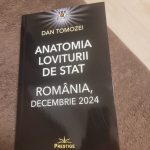

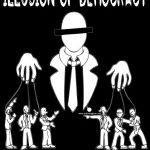
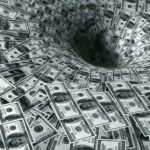



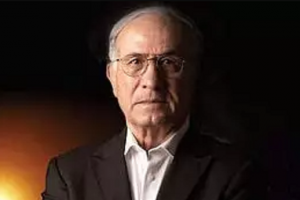
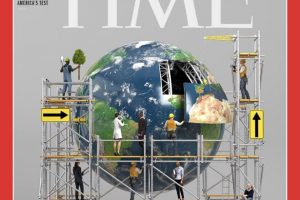

Adauga comentariu